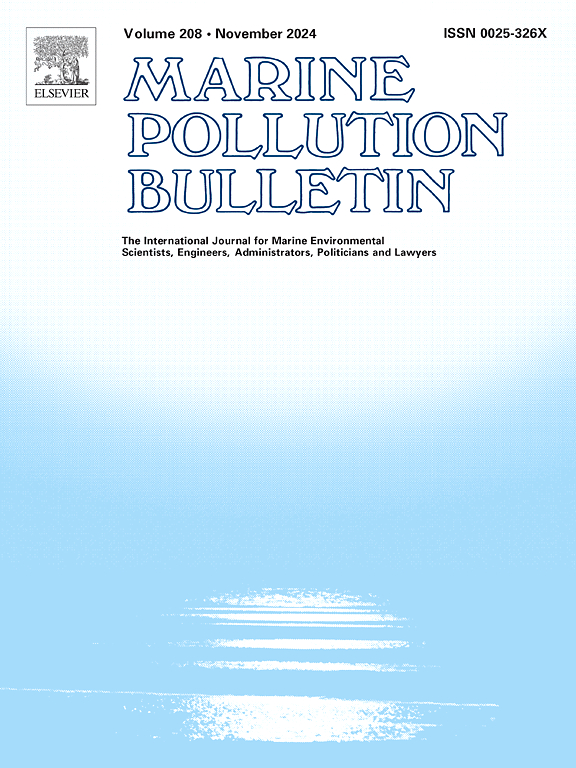Extreme abiotics drive sediment biocomplexity along pH gradients in a shallow submarine volcanic vent
IF 5.3
3区 环境科学与生态学
Q1 ENVIRONMENTAL SCIENCES
引用次数: 0
Abstract
Volcanic emissions in shallow vents influence the biogeochemistry of the sedimentary compartment, creating marked abiotic gradients. We assessed the spatial dynamics of the sediment compartment, as for the composition and origin of organic matter and associated prokaryotic community, in a volcanic shallow CO2 vent (Vulcano Island, Italy). Based on elemental (carbon, nitrogen content and their ratio) and isotopic composition (δ13C, δ15N and δ34S), the contribution of vent-derived organic matter (microbial mats) to sedimentary organic matter was high close to the vent, while the marine-derived end-members (seagrasses) contributed highly at increasing distance. Chemoautotrophic Campylobacterota and hyperthermophilic Achaea prevailed close to the vent, whilst phototrophic and chemoheterotrophic members dominated at increasing distance. Abiotic gradients generated by the volcanic CO2 vent drive relevant changes in the composition, origin and nutritional quality of sedimentary organic matter, and influence the structure and complexity of associated prokaryotic communities, with expected relevant impact on the entire food-web.

极端非生物驱动沉积物的生物复杂性沿pH梯度在浅海火山喷口
浅层喷口火山喷发影响沉积隔室的生物地球化学,形成明显的非生物梯度。我们评估了意大利Vulcano岛火山浅CO2喷口沉积物隔室的空间动力学,包括有机质的组成和来源以及相关的原核生物群落。从元素(碳、氮含量及其比值)和同位素组成(δ13C、δ15N和δ34S)来看,近喷口处的有机质(微生物席)对沉积有机质的贡献较大,而近喷口处的海相端元(海草)对沉积有机质的贡献较大。趋化自养弯曲菌和超嗜热Achaea在靠近通风口处占优势,而光养和趋化异养成员在离通风口越远处占优势。火山CO2喷口产生的非生物梯度驱动了沉积有机质的组成、来源和营养质量的相关变化,并影响了相关原核生物群落的结构和复杂性,预计将对整个食物网产生相关影响。
本文章由计算机程序翻译,如有差异,请以英文原文为准。
求助全文
约1分钟内获得全文
求助全文
来源期刊

Marine pollution bulletin
环境科学-海洋与淡水生物学
CiteScore
10.20
自引率
15.50%
发文量
1077
审稿时长
68 days
期刊介绍:
Marine Pollution Bulletin is concerned with the rational use of maritime and marine resources in estuaries, the seas and oceans, as well as with documenting marine pollution and introducing new forms of measurement and analysis. A wide range of topics are discussed as news, comment, reviews and research reports, not only on effluent disposal and pollution control, but also on the management, economic aspects and protection of the marine environment in general.
 求助内容:
求助内容: 应助结果提醒方式:
应助结果提醒方式:


